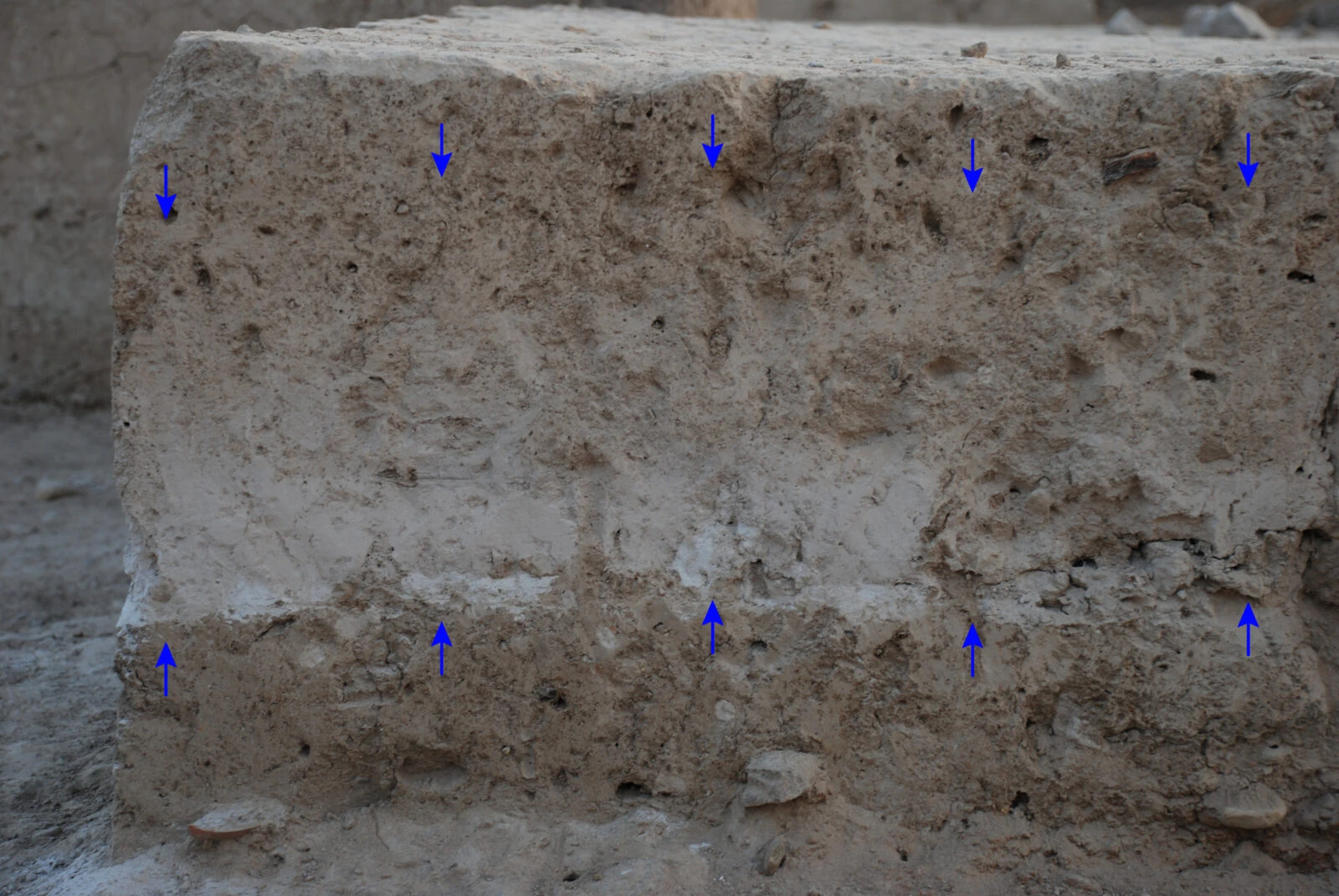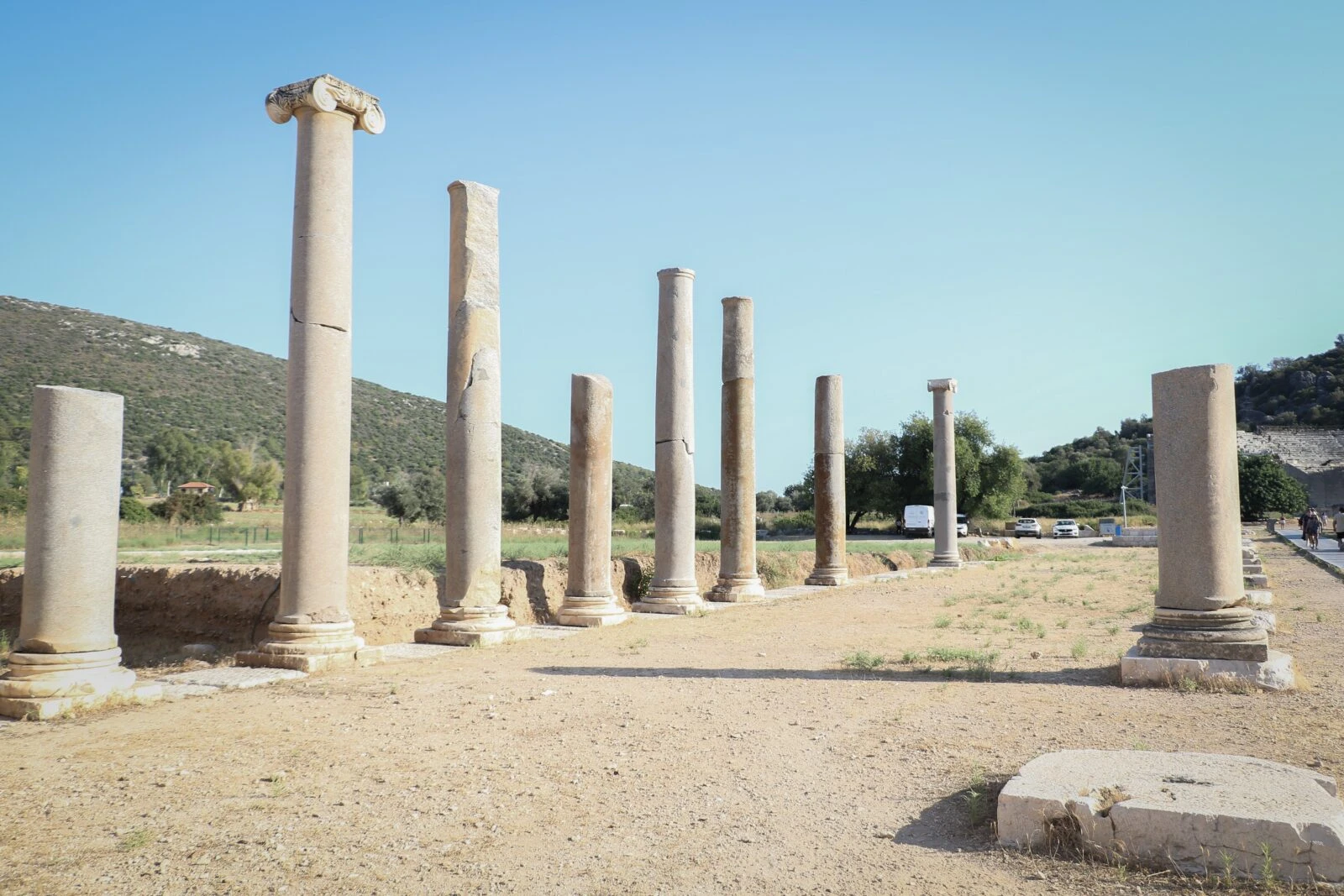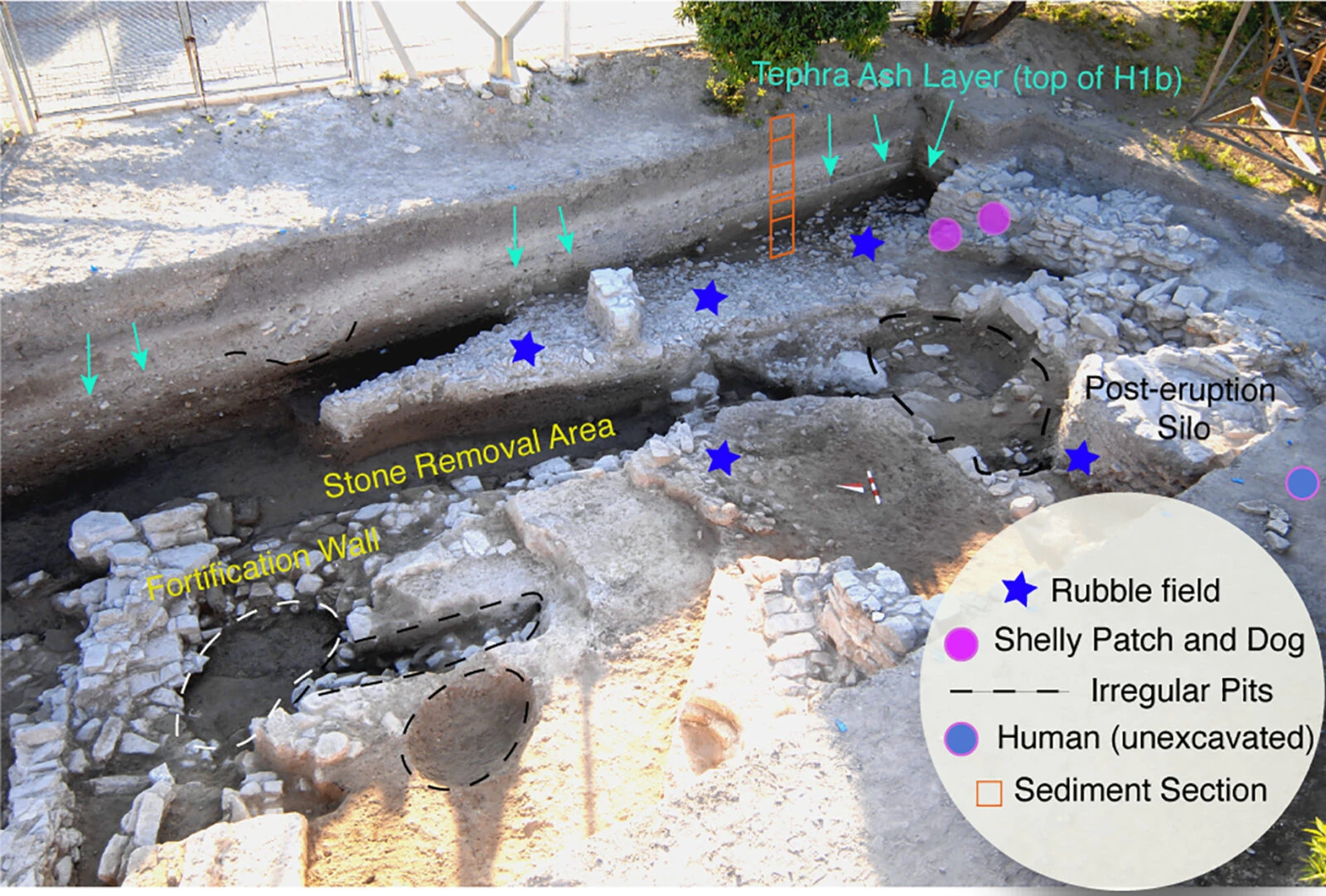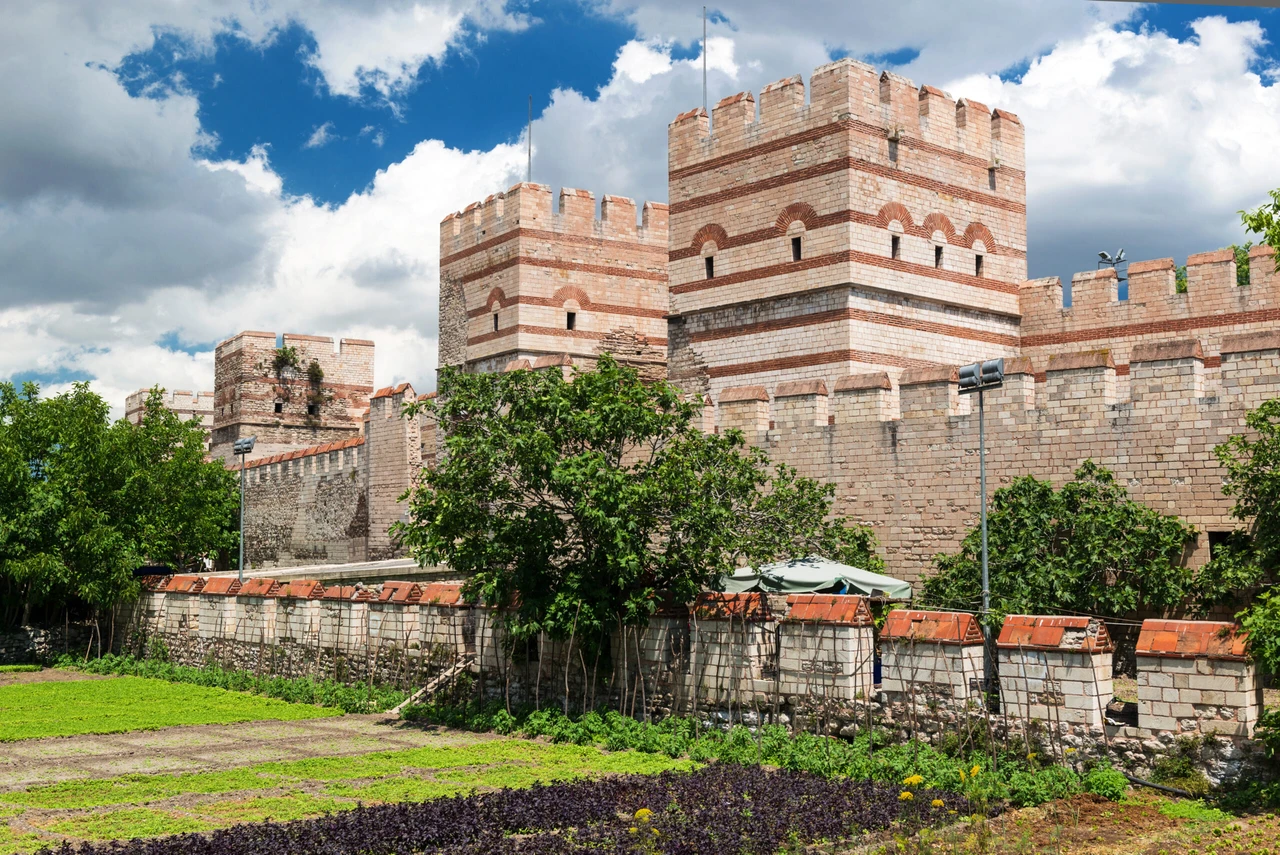Türkiye’s ancient cities witness Santorini’s cataclysmic eruption 3,500 years ago
 Archaeological remains uncovered during excavations in Baglararasi reveal evidence of the destruction caused by the tsunami triggered by the Santorini Volcano eruption 3,500 years ago in the Cesme district of Izmir, February 4, 2025. (AA Photo)
Archaeological remains uncovered during excavations in Baglararasi reveal evidence of the destruction caused by the tsunami triggered by the Santorini Volcano eruption 3,500 years ago in the Cesme district of Izmir, February 4, 2025. (AA Photo)
The discovery of volcanic ash across three significant archaeological sites in Anatolia reveals the far-reaching impact of the catastrophic eruption of Santorini’s volcano 3,500 years ago.
Researchers have identified the exact traces of volcanic activity, including ash clouds and tsunami remnants, that reached the western shores of Türkiye, shedding light on the extent of the disaster that affected the ancient world.

Ashes found in Tepecik Hoyuk
In the ancient mound of Tepecik Hoyuk, located in the Cine district of Aydin, researchers have uncovered layers of volcanic ash, which they have traced back to the eruption on Santorini Island around 1,500 B.C. The discovery was made during excavations led by Professor Sevinc Gunel of Hacettepe University, who noted that the ashes’ composition matched those found in Santorini.
“The ashes were analyzed at the Technical University of Vienna’s Atomic Institute. The results showed that the elements in the ashes are similar to those of the Santorini eruption,” Gunel said. These findings have been published in the international archaeology journal Anatolica in December 2024, adding crucial evidence to the understanding of how the eruption affected the ancient Mediterranean world.
Ash clouds and volcanic disasters: Widespread evidence
The volcanic ash found in Tepecik Hoyuk was deposited in thick layers over a wide area. Professor Gunel explained that the unique structure of the ashes, including microscopic glass fragments typical of volcanic eruptions, provided concrete evidence of their volcanic origin. This discovery highlights the scale of the Santorini eruption, which had a significant impact on the surrounding regions, including western Anatolia and the eastern Mediterranean.
Further excavation revealed that the volcanic ash had covered architectural remains and even the remains of an adult skeleton, suggesting the eruption’s devastation extended beyond the immediate aftermath of the eruption itself.

Traces of the Santorini eruption in Patara
In the coastal city of Patara, Professor Havva Iskan Isik also found evidence of volcanic ash deposits from the Santorini eruption. According to Hurriyet, during her research at Patara, she identified the same widespread ash cloud that affected much of the region. However, she clarified that while the ash cloud reached the area, there was no direct evidence of a tsunami impact.
“There were no signs of a tsunami here, but the ash cloud from the eruption certainly reached this far,” Professor Isik explained. This further reinforces the idea that the eruption created far-reaching environmental effects across the Mediterranean.

Tsunami evidence found in Cesme
The most striking evidence of the Santorini eruption’s destructive power comes from the Cesme region, where significant tsunami remnants have been discovered. Excavations in the Baglararasi area of Cesme between 2009 and 2019 uncovered traces of both volcanic ash and a tsunami that devastated the region. These findings have provided the first direct evidence of tsunami damage caused by the eruption, with traces of a skeleton believed to belong to a young male found among the tsunami debris.
Professor Vasif Sahoglu, who led the excavations, described the tsunami as one of the largest natural disasters in the history of the Mediterranean. “The Santorini volcano eruption created a massive tsunami that reached the coast of Cesme, nearly 227 kilometers away,” he said. The remnants of this event offer insight into the catastrophic effects of the eruption on ancient settlements.
A legacy of destruction and preservation
The Santorini eruption’s legacy continues to influence both scientific research and the preservation of historical sites. The ashes and tsunami remnants found in Cesme provide invaluable insight into the disaster that occurred over 3,500 years ago. As the volcano remains active, ongoing research aims to better understand its potential future impacts and the historical significance of its past eruptions.
In recognition of its historical importance, efforts are underway to turn the archaeological site in Cesme into an educational park that will showcase the devastation caused by the Santorini eruption, helping to preserve and present the legacy of this ancient disaster for future generations.



